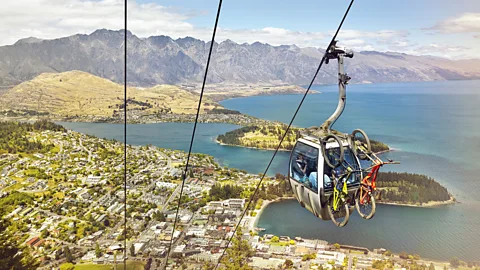The world's adventure capital's massive gamble
 Getty Images
Getty ImagesThe fuel-guzzling town of Queenstown, New Zealand, has an audacious goal to become the first tourist destination on Earth to have a completely carbon-zero visitor economy – and all by 2030.
By 2030 – if things really go to plan – you'll land in Queenstown on New Zealand's South Island (possibly even aboard an electric-powered Air New Zealand airplane) and make your way to town via an electric gondola or on a hydro-powered ferry across the town's famous glacier-fed lake, Lake Wakatipu. Skiers and snowboarders – who in winter descend on this region in ever-increasing numbers from around the world – will ride electric-powered chairlifts to the peaks of the surrounding ski resorts.
Year-round, travellers might take high-speed rides on Lake Wakatipu and along the shallow whitewater rapids of the Shotover River town aboard the world's first fully electric jet boats. Even the TSS Earnslaw – this hemisphere's oldest coal-fired, enger-carrying steamship that has transported young families on day excursions since the 1970s – will run on hydrogen.
It's all part of the region's very ambitious plan to become the first tourist town on Earth to have a carbon-zero visitor economy by 2030. The "adventure capital of the world" – a title earned through decades of innovation creating death-defying activities that had been done nowhere else, but ones that run primarily on fossil fuels – now wants to become the ecotourism capital of the world. And they're aiming for a carbon-zero visitor economy in six years, not an easier-to-achieve carbon-neutral visitor economy (where Queenstown could use carbon credits, like planting trees, to achieve its environmental goals). Becoming carbon-zero is much harder to achieve – because it means you can't emit any carbon at all.
"Well, 2030 creates urgency, doesn't it">window._taboola = window._taboola || []; _taboola.push({ mode: 'alternating-thumbnails-a', container: 'taboola-below-article', placement: 'Below Article', target_type: 'mix' });
